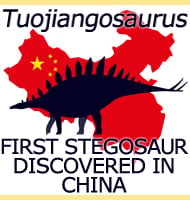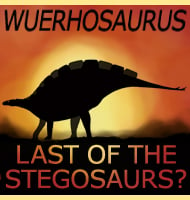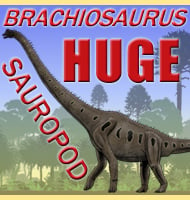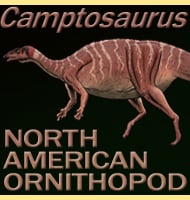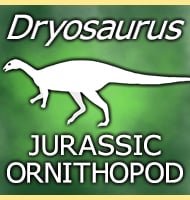


Natronasaurus
Name:
Natronasaurus
(Natrona lizard).
Phonetic: Na-tron-a-sor-us.
Named By: Roman E. Ulansky - 2014.
Synonyms: Stegosaurus longispinus.
Classification: Chordata, Reptilia,
Ornithischia, Stegosauria, Stegosauridae.
Species: N. longispinus
(type).
Diet: Herbivore.
Size: Roughly estimated at about 5.7 meters long.
Known locations: USA, Wyoming - Morrison
Formation.
Time period: Late Jurassic.
Fossil representation: Partial post cranial skeleton
including vertebrae, ribs, ischia, partial pubis, right femur,
and four tail spines.
In
1914 the palaeontologist Charles Whitney Gilmore described a new
species of Stegosaurus
which he named S. longispinus. The name was
chosen as a reflection of the unusually large tail spines that were
much longer than those seen in other Stegosaurus
fossils. For many
years however the validity of S. longispinus was
called into question
with the long spines possibly representing a case of sexual dimorphism
and there for display. However others such Olshevsky and Ford in
1993 speculated that Stegosaurus longispinus may
in fact be an
American species of Kentrosaurus
which is known from Africa. Studies
were hampered however when the type specimen was damaged by water from
a burst pipe at the University of Wyoming and was thought lost,
though fossils are now known again. Then in 2014 Roman Ulansky
re-described Stegosaurus longispinus as a new
genus; Natronasaurus.
Natronasaurus
is named after Natrona County in Wyoming where the first specimen was
dug out of the ground. With an estimated length of about 5.7
meters for the holotype individual, Natronasaurus
would have been a
medium sized stegosaurid dinosaur, and one speculated to be more like
Kentrosaurus than Stegosaurus.
However, at the time of writing only
four tail spines are known, and the full pattern of spines and
possible plates along the back is still unknown. For this reason
reconstructions are usually based upon Kentrosaurus
which is known to
have small plates on the anterior (front) half of the body, and
long spines on the posterior (rear) half of the body. Like all
stegosaurid dinosaurs, Natronasaurus would have
been a browser of low
growing vegetation while ornithopod and sauropod
dinosaurs would have
browsed the medium and high levels.
Possible
predatory threats to Natronasaurus include Allosaurus,
Torvosaurus,
Fosterovenator
and possibly also Ceratosaurus.
Further reading
- Osteology of the armoured Dinosauria in the United States National
Museum, with special reference to the genus Stegosaurus.
- United
States National Museum Bulletin 89: 1–143. - Charles Whitney
Gilmore - 1914.
- The origin and evolution of the stegosaurs. - Gakken Mook,
Dinosaur Frontline, v. 4, p. 65-103. - G. Olshevsky
& T. L. Ford - 1993.
- The tale of the lost Stegosaurus longispinus
Tail. 67th Annual
Meeting. Society of Vertebrate Paleontology. - Journal of
Vertebrate Paleontology, 27, 3, 150A. - E. Southwell
& B. Breithaupt - 2007.
- Evolution of the stegosaurs (Dinosauria; Ornithischia) (In
Russian). - Dinologia, 35 pp. - Roman E. Ulansky -
2014.
----------------------------------------------------------------------------
Random favourites
 |
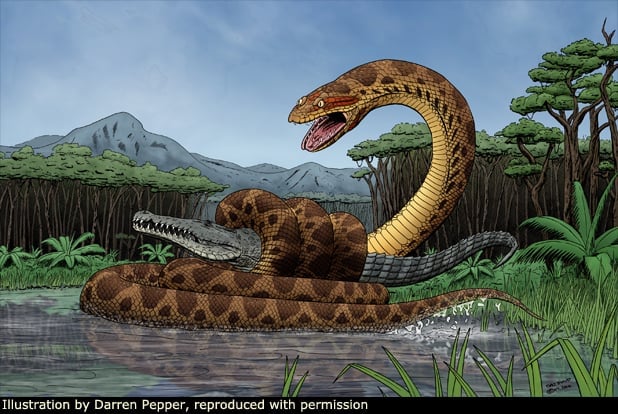 |
 |
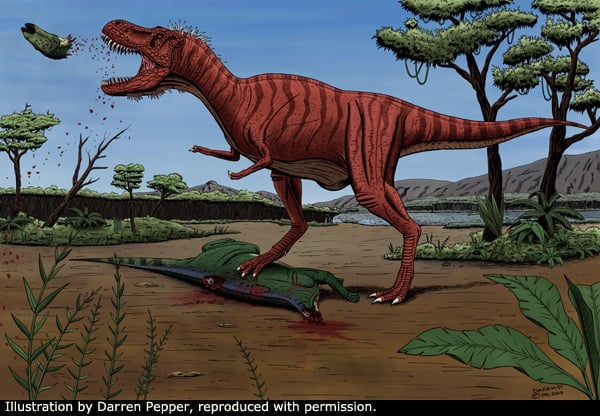 |
